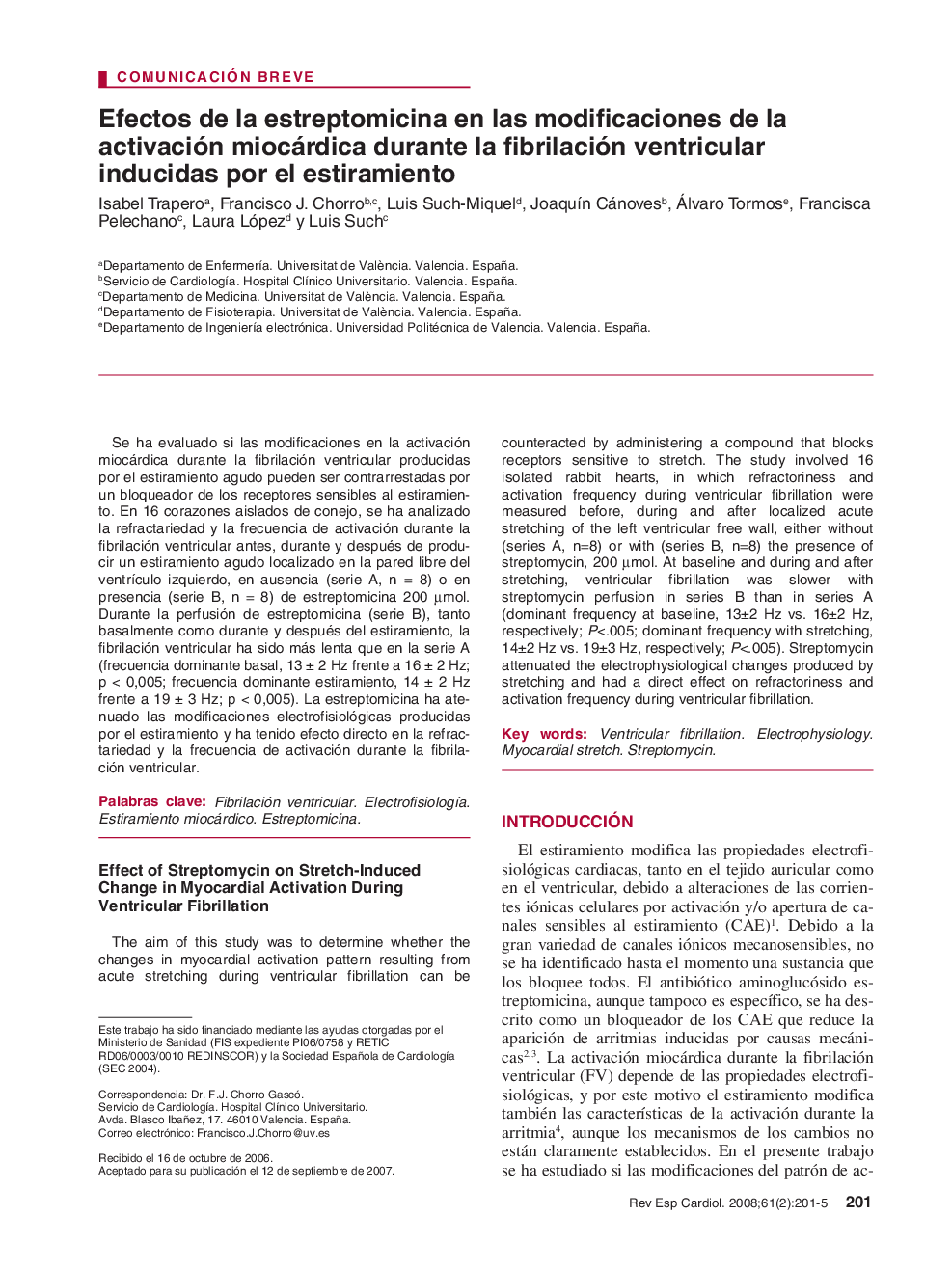| Article ID | Journal | Published Year | Pages | File Type |
|---|---|---|---|---|
| 3013977 | Revista Española de Cardiología | 2008 | 5 Pages |
Abstract
The aim of this study was to determine whether the changes in myocardial activation pattern resulting from acute stretching during ventricular fibrillation can becounteracted by administering a compound that blocks receptors sensitive to stretch. The study involved 16 isolated rabbit hearts, in which refractoriness and activation frequency during ventricular fibrillation were measured before, during and after localized acute stretching of the left ventricular free wall, either without (series A, n=8) or with (series B, n=8) the presence of streptomycin, 200 μmol. At baseline and during and after stretching, ventricular fibrillation was slower with streptomycin perfusion in series B than in series A (dominant frequency at baseline, 13±2 Hz vs. 16±2 Hz, respectively; P<.005; dominant frequency with stretching, 14±2 Hz vs. 19±3 Hz, respectively; P<.005). Streptomycin attenuated the electrophysiological changes produced by stretching and had a direct effect on refractoriness and activation frequency during ventricular fibrillation.
Keywords
Related Topics
Health Sciences
Medicine and Dentistry
Cardiology and Cardiovascular Medicine
Authors
Isabel Trapero, Francisco J. Chorro, Luis Such-Miquel, JoaquÃn Cánoves, Álvaro Tormos, Francisca Pelechano, Laura López, Luis Such,
